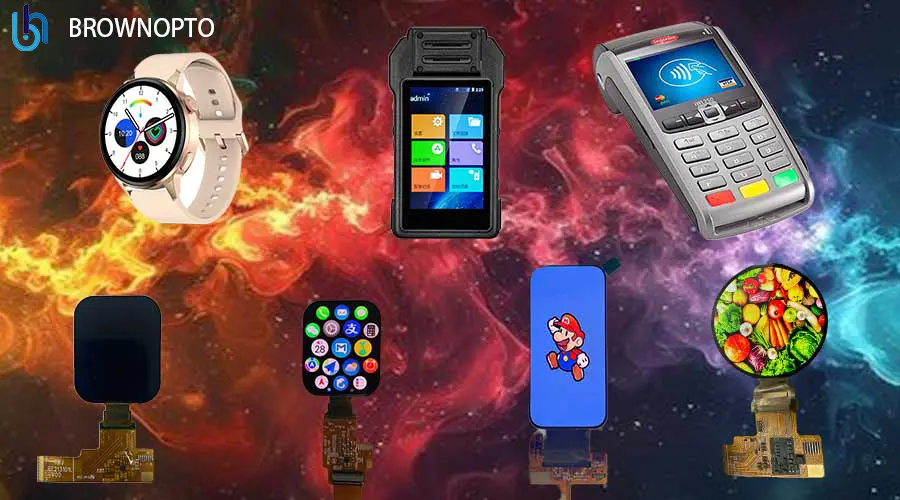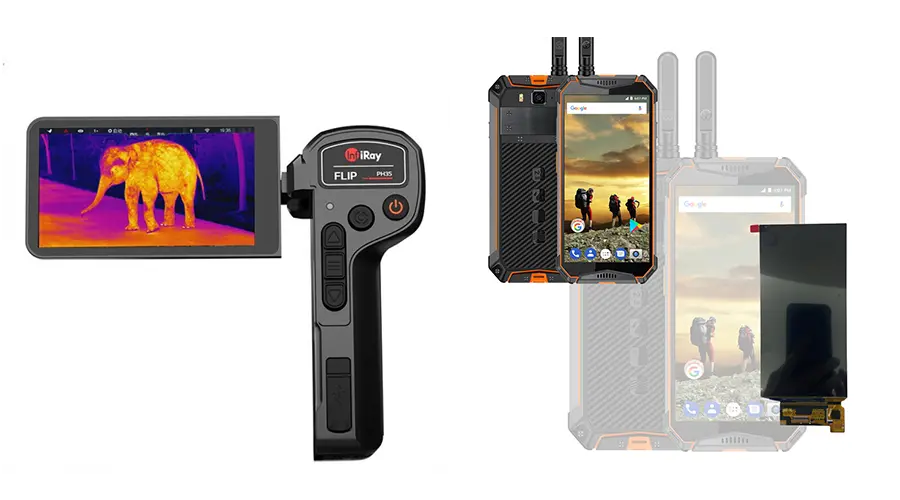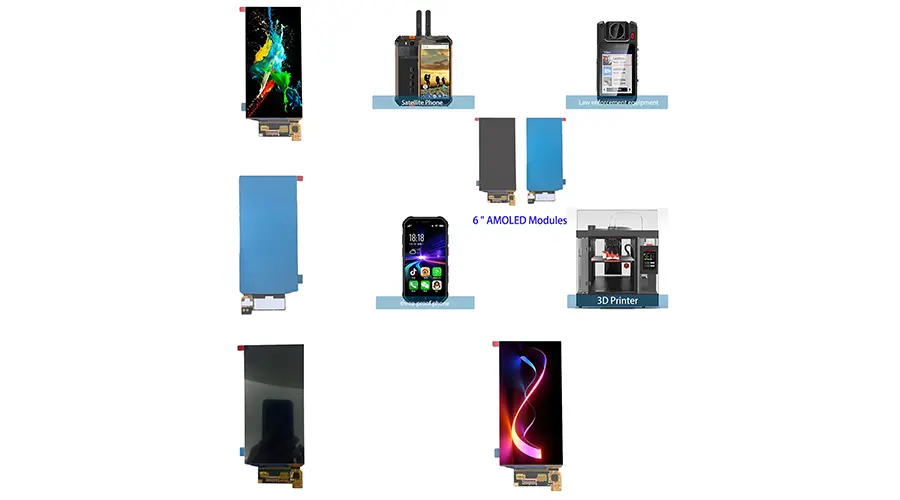A BROWNOPTO Engineering Case Study with MedTech Innovations Inc.
Cliënt: MedTech Innovations Inc. — a U.S.-based innovator in point-of-care (POC) diagnostic systems
Application: Portable Blood Chemistry Analyzer for Emergency & Rural Healthcare
BROWNOPTO Product: Custom 4.40" On-Cell Touch LTPS AMOLED Display Module (Model: BR440102-A1)
Interface: MIPI DSI 2-lane, 60Hz refresh rate
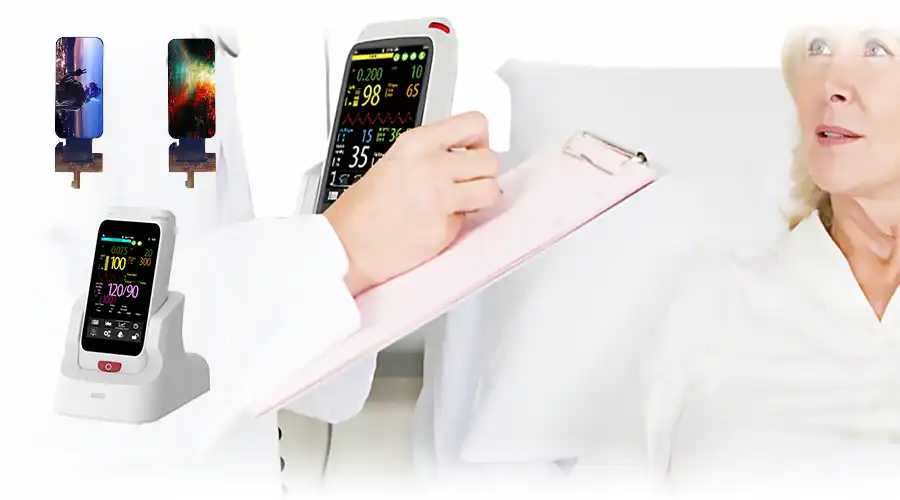
Project Background & Technical Challenges
MedTech Innovations sought to replace the legacy LCD in its flagship handheld blood analyzer with a next-generation display that could meet the stringent demands of clinical and field environments. The device is used by paramedics, lab technicians, and rural health workers—often in uncontrolled lighting, temperature, and humidity conditions.
De kernvereisten voor het display omvatten:
Leesbaarheid in zonlicht:Minimale helderheid van 600 nits met antireflectiebehandeling (AR) om de leesbaarheid in direct zonlicht (≥100.000 lux) te garanderen.
Milieurobuustheid:Stabiele werking bij een omgevingstemperatuur van -20°C tot +70°C en een relatieve luchtvochtigheid van 95% (niet-condenserend).
Menselijke factoren:Handschoencompatibele capacitieve aanraking met detectie van natte vingers en lage latentie (<20 ms).
Vormfactor:Moduledikte ≤0,8 mm voor een slanker en ergonomischer handheld chassis.
Naleving van regelgeving:Volledige naleving van RoHS 2.0 (2015/863/EU), REACH (SVHC < 0,1%) en halogeenvrije (HF) materiaalnormen voor medische apparatuur.
Lange termijn betrouwbaarheid:Meer dan 50.000 uur operationele levensduur met minimale afname van de helderheid.
Standaard AMOLED-panelen voldeden niet aan de mechanische duurzaamheid en optische consistentie die vereist zijn voor medische hulpmiddelen van klasse II. MedTech had een displaypartner nodig die in staat was tot gezamenlijke ontwikkeling – niet alleen tot levering.
Mede-ontwikkelde AMOLED-displayoplossing van BROWNOPTO
BROWNOPTO nam deel aan een gezamenlijk ontwikkelingsprogramma van zes maanden met de hardware- en firmwareteams van MedTech. De samenwerking omvatte optisch ontwerp, mechanische integratie, elektrische validatie en wettelijke documentatie.
Belangrijke technische mijlpalen waren onder meer:
Optimalisatie van optische stapel:Integratie van een hybride HC (Hard Coat) + AR-polarisator om de oppervlaktereflectie te verminderen tot <1,5% terwijl de krasbestendigheid behouden blijft (≥3H potloodhardheid).
Integratie van touch-bediening op de cel:Aangepaste afstemming van de firmware van de CST3530-touchcontroller ter ondersteuning van invoer met handschoenen van 5 mm en ter voorkoming van valse triggers door vocht of contact met de handpalm.
Thermisch beheer:Implementatie van een FPC (Flexible Printed Circuit) met lage thermische uitzetting om delaminatie tijdens thermische cycli te voorkomen.
Vermogenssequentie:Co-ontwerp van de timing voor het in- en uitschakelen van het scherm met MedTech's PMIC om schermflikkering tijdens het opstarten te voorkomen.
Kleurkalibratie:Door de fabriek uitgevoerde gamma- en witpuntkalibratie (D65, 2,2 gamma) om nauwkeurige weergave van medische UI-elementen (bijv. waarschuwingspictogrammen en trendgrafieken) te garanderen.
Technische specificaties
| Parameter | Specificatie | Validatiestandaard |
|---|---|---|
| Weergavetype | 4,40" LTPS AMOLED | — |
| Actief gebied | 54,3 × 115,8 mm | — |
| Oplossing | 568 × 1210 pixels (Full HD+) | Pixeldichtheid: 296 PPI |
| Helderheid | 600 nits (typisch), 800 nits (piek) | Gemeten volgens ISO 13406-2 |
| Contrastverhouding | 100.000:1 (typisch) | Oneindig in donkere omstandigheden |
| Touchtechnologie | Capacitief op de cel (CST3530 IC) | Ondersteunt 10-punts multi-touch |
| Kijkhoek | ≥85° (alle richtingen) | ΔE < 5 bij 80° |
| Moduledikte | 0,75 mm (exclusief FPC) | — |
| Interface | MIPI DSI 2-baans, 60 Hz | Voldoet aan MIPI Alliance v1.3 |
| Bedrijfstemp. | -20°C tot +70°C | IEC 60068-2-1 / -2-2 |
| Opslagtemp. | -30°C tot +80°C | — |
| Naleving | RoHS 2.0, REACH, HF, ISO 10993-5 (getest op cytotoxiciteit) | Volledige materiaalverklaring beschikbaar |
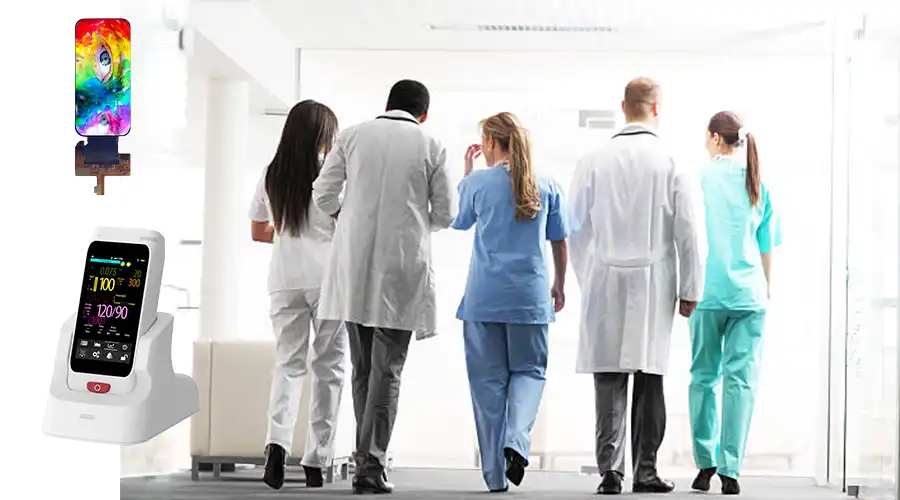
Validation & Field Performance
De BR440102-A1-module onderging strenge validatie bij zowel BROWNOPTO als MedTech:
Milieutesten:Heeft 240 uur blootstelling aan hoge/lage temperatuurcycli (-20°C ↔ +70°C) en 96 uur blootstelling aan 95% RV doorstaan zonder delaminatie of mura.
Mechanische robuustheid:Overleefde 3 vallen vanaf 1,2 m hoogte op multiplex (conform IEC 60601-1-11) zonder functionele storingen.
Optische consistentie:Luminantie-uniformiteit > 85% over het hele paneel; kleurverschuiving (Δu'v') < 0,01 bij variatie in de kijkhoek.
Klinische piloot:Ingezet in 500 eenheden bij 12 Amerikaanse noodhulpdiensten (EMS) gedurende 12 maanden. Er werden geen storingen in het veld gemeld die verband hielden met het display.
"BROWNOPTO leverde niet zomaar een display, ze hebben zich volledig in ons NPI-proces geïntegreerd. Hun engineeringteam loste de problemen met aanraakgeluid op waar we al maanden mee worstelden en zorgde ervoor dat de AMOLED voldeed aan de FDA-documentatievereisten voor traceerbaarheid van materialen. Deze samenwerking was cruciaal voor onze productlancering."
— Hoofd Hardware Systems Engineer, MedTech Innovations Inc.
Waarom BROWNOPTO AMOLED-schermen uitblinken in medische toepassingen
De aanpak van BROWNOPTO gaat verder dan alleen componentlevering. Wij bieden end-to-end display engineering voor bedrijfskritische toepassingen:
Toepassingsgericht ontwerp:Beeldschermen die zijn ontworpen voor gebruik in de echte wereld, niet alleen voor specificaties in datasheets.
Verticale integratie:Interne optische coating, touch-integratie en betrouwbaarheidstesten.
Regelgevende ondersteuning:Volledige documentatie over materiaalconformiteit (RoHS, REACH, HF, ISO 10993) voor het indienen van medische hulpmiddelen.
Schaalbare NPI:Van prototype tot massaproductie met consistente kwaliteit (PPM < 50).
Wereldwijde ondersteuning:Technische teams in Azië, Noord-Amerika en Europa voor snelle respons.
Bent u klaar om een uiterst betrouwbaar AMOLED-scherm te integreren in uw medische, industriële of defensie-apparaat?
Neem contact op met BROWNOPTOvoor een advies op maat over een display: ontworpen voor prestaties, gebouwd voor betrouwbaarheid.
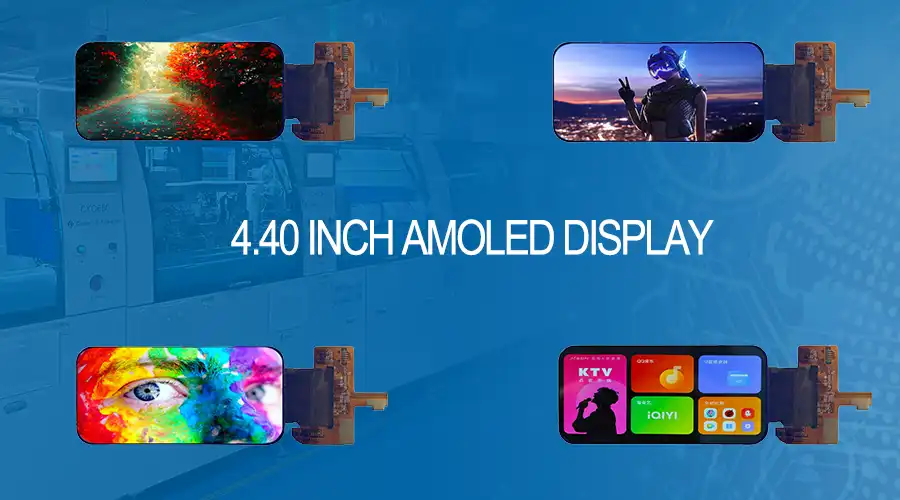
Veelgestelde vragen
Wat veroorzaakt OLED-inbranding en hoe kan dit worden voorkomen?
Inbranden treedt op wanneer organische materialen ongelijkmatig afbreken door langdurige weergave van statische beelden. Preventie hiervan omvat het gebruik van automatisch dimmen, time-out van het scherm, pixelverschuiving, logo-dimfunctie en het vermijden van hoge helderheid voor statische content.
Zijn OLED-schermen geschikt voor buitenomgevingen of omgevingen met hoge helderheid?
Standaard OLED's hebben moeite met direct zonlicht vanwege de beperkte piekhelderheid. Sommige modellen hebben echter een hogere nits-output en antireflectiecoating. Voor volledig buitengebruik kunt u Mini-LED's of gespecialiseerde OLED-varianten met hoge helderheid overwegen.
Hoe lang gaan OLED-schermen doorgaans mee?
De levensduur van OLED-schermen wordt doorgaans geschat op 30.000 tot 100.000 uur bij L50 (halve helderheid). De levensduur is afhankelijk van gebruikspatronen, helderheidsniveaus en bedrijfstemperatuur. Blauwe pixels degraderen sneller, waardoor de witbalans na verloop van tijd kan verschuiven.
Kunnen OLED's worden gebruikt voor always-on displays (AOD)?
Ja — OLED's zijn ideaal voor AOD vanwege het lage stroomverbruik bij het weergeven van donkere thema's of kleine pictogrammen. Om het risico op inbranden te verminderen, kunt u dynamische positionering, lage helderheid en een beperkt aantal actieve pixels gebruiken.
Wat is het verschil tussen AMOLED en PMOLED?
AMOLED (Active Matrix OLED) maakt gebruik van een TFT-backplane voor snelle verversing en hoge resoluties, ideaal voor smartphones en wearables. PMOLED (Passive Matrix OLED) stuurt rijen/kolommen rechtstreeks aan en is geschikt voor kleinere, eenvoudigere displays met lagere kosten.
Ondersteunen OLED-schermen touchfunctionaliteit?
Ja — de meeste OLED-modules integreren capacitieve (PCAP) of resistieve aanraaklagen. Flexibele OLED's worden vaak gecombineerd met gebogen aanraaksensoren voor naadloze wearables en automotive-ontwerpen.
Laatste artikelen
-
Waarom 1-2" AMOLED's de sleutel zijn tot AR/XR in 2025
Waarom 1-2 inch AMOLED-schermen essentieel worden in de AR/XR-hausse (2025 Industry Insight)body {f
-
Understanding OLED Display Technology: Principles, Performance & Applications
OLED (Organic Light Emitting Diode) displays are a class of self-emissive display technology in whic
-
From Wearables to AR Glasses – How OLED Displays Are Redefining Visual Experiences in 2025
By 2025, OLED (Organic Light-Emitting Diode) technology has transitioned from luxury smartphone disp
-
LCD-schermen met uitgerekte staven voor de detailhandel: verhoog de omzet en betrokkenheid in supermarkten
Ontdek hoe LCD-schermen met uitgerekte staven de marketing in de supermarktschappen verbeteren, de verkoop stimuleren en de kosten verlagen.
-
Uitgerekte LCD-oplossingen voor restaurants en horecagelegenheden
Uitgerekte LCD's bieden strakke, zeer heldere displays die perfect zijn voor restaurantmenu's en horecagelegenheden.

